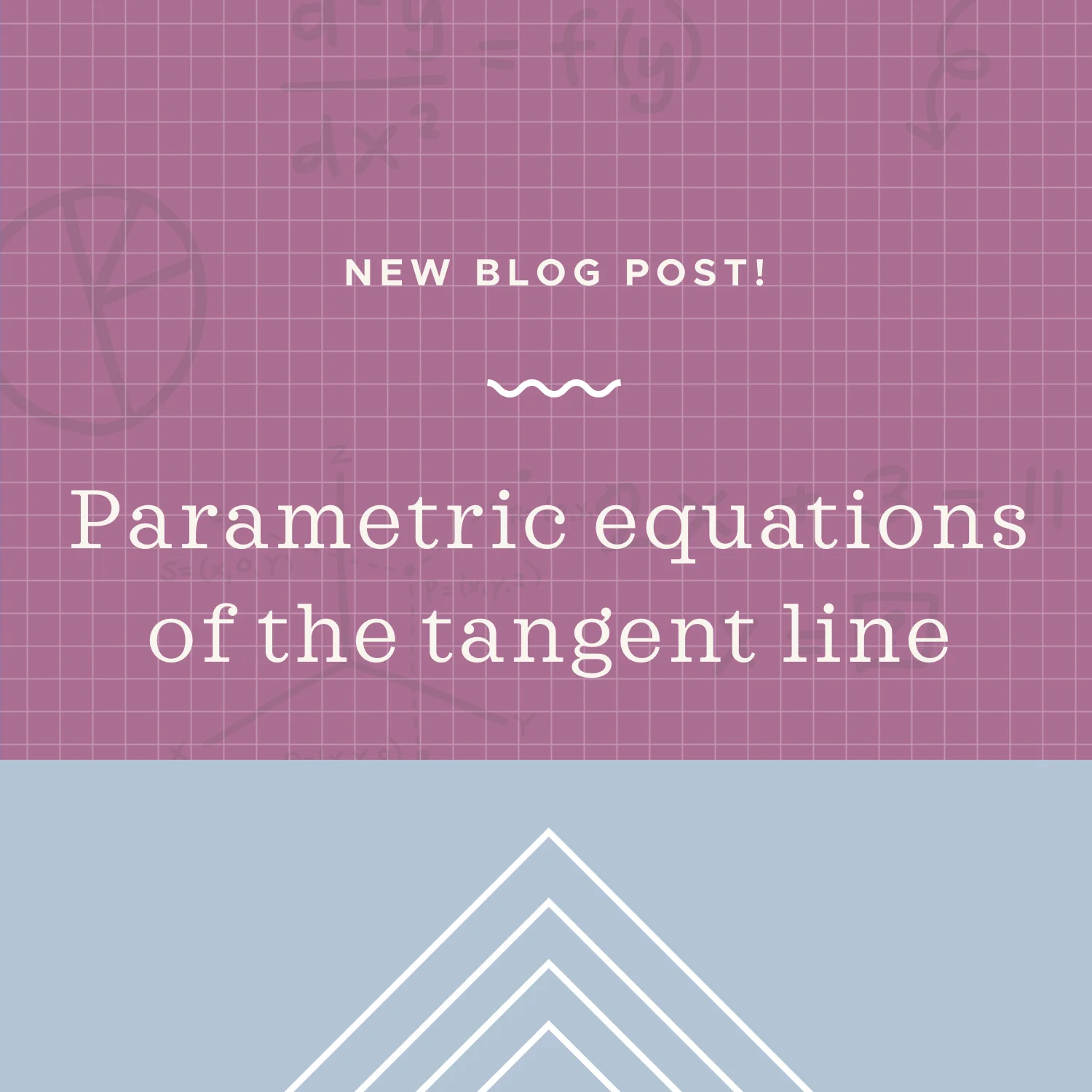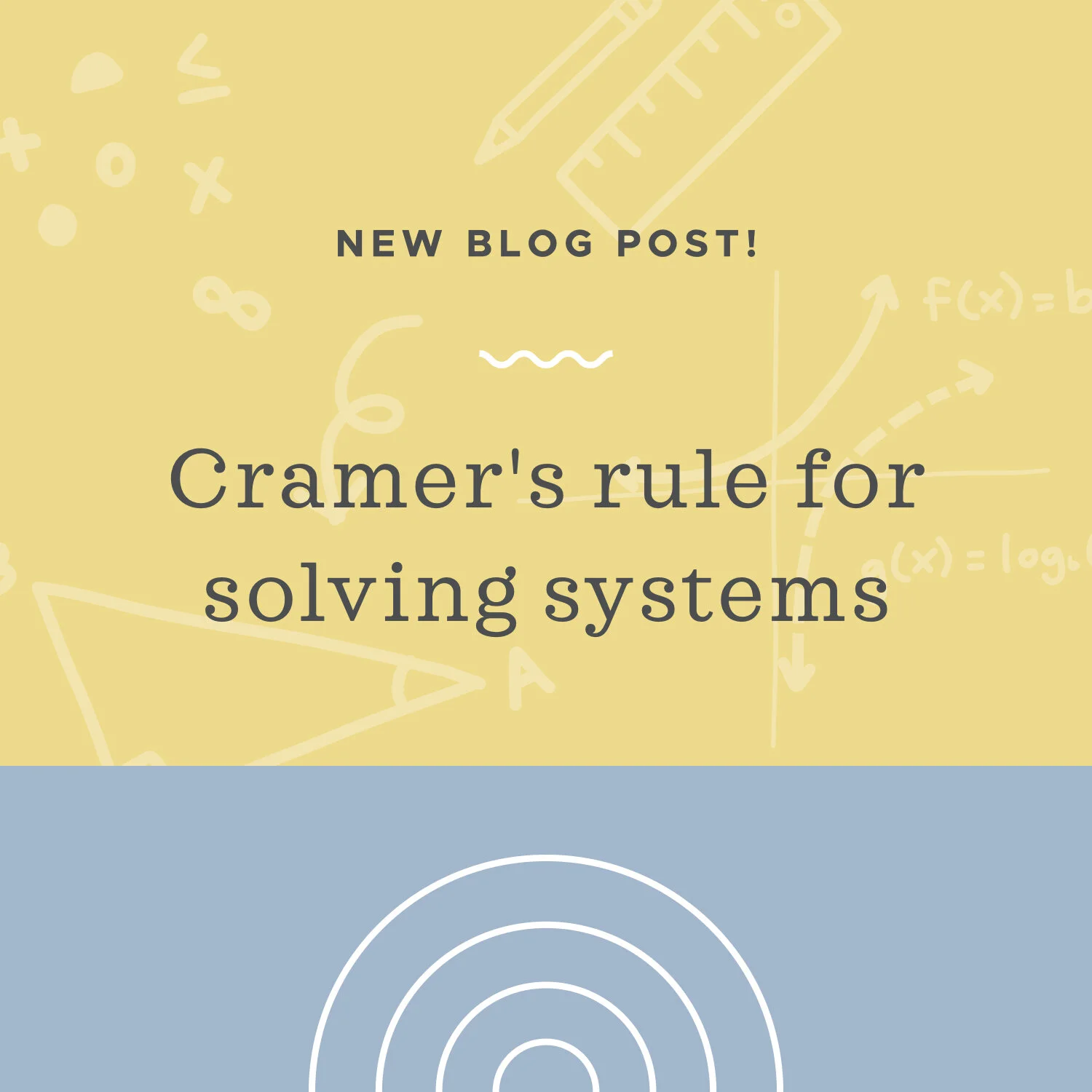While we usually use functions to map coordinate points, if we’re going to map vectors from one space to another, we usually switch over from the language of “functions,” to “transformations.” In other words, even though functions and transformations perform the same kind of mapping operation, if we want to map vectors, we should really say that the mapping is done by a transformation instead of by a function.
Read MoreWe’ve seen how to use the method of undetermined coefficients and the method of variation of parameters to compute the general solution to a nonhomogeneous system of differential equations. We can also use the matrix exponential, e^(At), where A is an n x n matrix of constants, as part of the following formula for the solution to a nonhomogeneous system.
Read MoreWe know now how to convert polar coordinate points (r,theta) into rectangular coordinate points (x,y). We’ve used the conversion formulas x=rcos(theta), y=rsin(theta), r^2=x^2+y^2, and tan(theta)=y/x. In the same way that we used these conversion formulas to convert coordinate points, we can also use them to convert equations from polar coordinates into rectangular coordinates.
Read MoreIn the previous lesson, we looked at an example of a linear transformation that included a reflection and a stretch. We can apply the same process for other kinds of transformations, like compressions, or for rotations. But we can also use a linear transformation to rotate a vector by a certain angle, either in degrees or in radians.
Read MoreWe saw that first order linear equations are differential equations in the form dy/dx+P(x)y=Q(x). In contrast, first order separable differential equations are equations in the form N(y)(dy/dx)=M(x) or N(y)y'=M(x). We call these “separable” equations because we can separate the variables onto opposite sides of the equation. In other words, we can put the x terms on the right and the y terms on the left, or vice versa, with no mixing.
Read MoreLike cartesian (or rectangular) coordinates and polar coordinates, spherical coordinates are just another way to describe points in three-dimensional space. Rectangular coordinates are given as (x,y,z), where x is the distance from the origin along the x-axis, y is the distance from the origin along the y-axis, and z is the distance from the origin along the z-axis. Spherical coordinates are given as (rho,theta,phi), where rho is the distance from the origin, theta is the angle to the positive direction of the x-axis, and phi is the angle to the positive direction of the z-axis.
Read MoreTo calculate the work done when a variable force is applied to lift an object of some mass or weight, we’ll use the formula W=integral [a,b] F(x) dx, where W is the work done, F(x) is the equation of the variable force, and [a,b] is the starting and ending height of the object.
Read MoreWe’ll learn much more about matrices in Linear Algebra. For now, we just need a brief introduction to matrices (for some, this may be a review from Precalculus), since we’ll be using them extensively to solve systems of differential equations.
Read MoreIf undetermined coefficients isn’t a viable method for solving a nonhomogeneous system of differential equations, we can always use the method of variation of parameters instead. Just like with undetermined coefficients, we have to start by finding the corresponding complementary solution, which is the general solution of the associated homogeneous equation.
Read MoreWe can say that there are an infinite number of ways to express the same point in space in polar coordinates. We can 1) keep the value of r the same but add or subtract any multiple of 2π from theta, and/or 2) change the value of r to -r while we add or subtract any odd multiple of π from theta.
Read MoreThe transpose of a matrix is simply the matrix you get when you swap all the rows and columns. In other words, the first row becomes the first column, the second row becomes the second column, and the nth row becomes the nth column. The determinant of a transpose of a square matrix will always be equal to the determinant of the original matrix.
Read MoreIn the last lesson about linear differential equations, all the general solutions we found contained a constant of integration, C. But we’re often interested in finding a value for C in order to generate a particular solution for the differential equation. This applies to linear differential equations, but also to any other form of differential equation. The information we’ll need in order to find C is an initial condition, which is the value of the solution at a specific point.
Read MoreThe parametric equations of the tangent line of a vector function r(t)=[{r(t)_1,r(t)_2,r(t)_3] are x=x_1+r'(t_0)_1t, y=y_1+r'(t_0)_2t. and z=z_1+r'(t_0)_3t.
Read MoreTo convert rectangular equations into polar equations, we’ll use three conversion formulas: x=rcos(theta), y=rsin(theta), and r^2=x^2+y^2.
Read MoreUp to now, we’ve been differentiating functions defined for f(x) in terms of x, or equations defined for y in terms of x. In other words, every equation we’ve differentiated has had the variables separated on either side of the equal sign. For instance, the equation y=3x^2+2x+1 has the y variable on the left side, and the x variable on the right side. We don’t have x and y variables mixed together on the left, and they aren’t mixed together on the right, either.
Read MoreIn this lesson we’ll look at the imaginary number i, what it means, and how to use it in expressions. The imaginary number i is defined as the square root of -1, and we can use it in algebraic expressions. An imaginary number (in general) is defined as a number that can be written as a product of a real number and i. For instance, 4i and -15i are imaginary numbers.
Read MoreThe span of a set of vectors is the collection of all vectors which can be represented by some linear combination of the set. That sounds confusing, but let’s think back to the basis vectors i=(1,0) and j=(0,1) in R^2. If you choose absolutely any vector, anywhere in R^2, you can get to that vector using a linear combination of i and j. If I choose (13,2), I can get to it with the linear combination a=13i+2j, or if I choose (-1,-7), I can get to it with the linear combination a=-i-7j. There’s no vector you can find in R^2 that you can’t reach with a linear combination of i and j.
Read MoreThe method of undetermined coefficients may work well when the entries of the vector F are constants, polynomials, exponentials, sines and cosines, or some combination of these. Our guesses for the particular solution will be similar to the kinds of guesses we used to solve second order nonhomogeneous equations, except that we’ll use vectors instead of constants.
Read MoreCramer’s Rule is a simple rule that lets us use determinants to solve a system of equations. It tells us that we can solve for any variable in the system by calculating D_v/D, where D_v is the determinant of the coefficient matrix, with the answer column values substituted into the column representing the variable for which we’re trying to solve, and where D is the determinant of the coefficient matrix.
Read MoreNow that we know how to use row operations to manipulate matrices, we can use them to simplify a matrix in order to solve the system of linear equations the matrix represents. Our goal will be to use these row operations to change the matrix into either row-echelon form, or reduced row-echelon form.
Read More





















